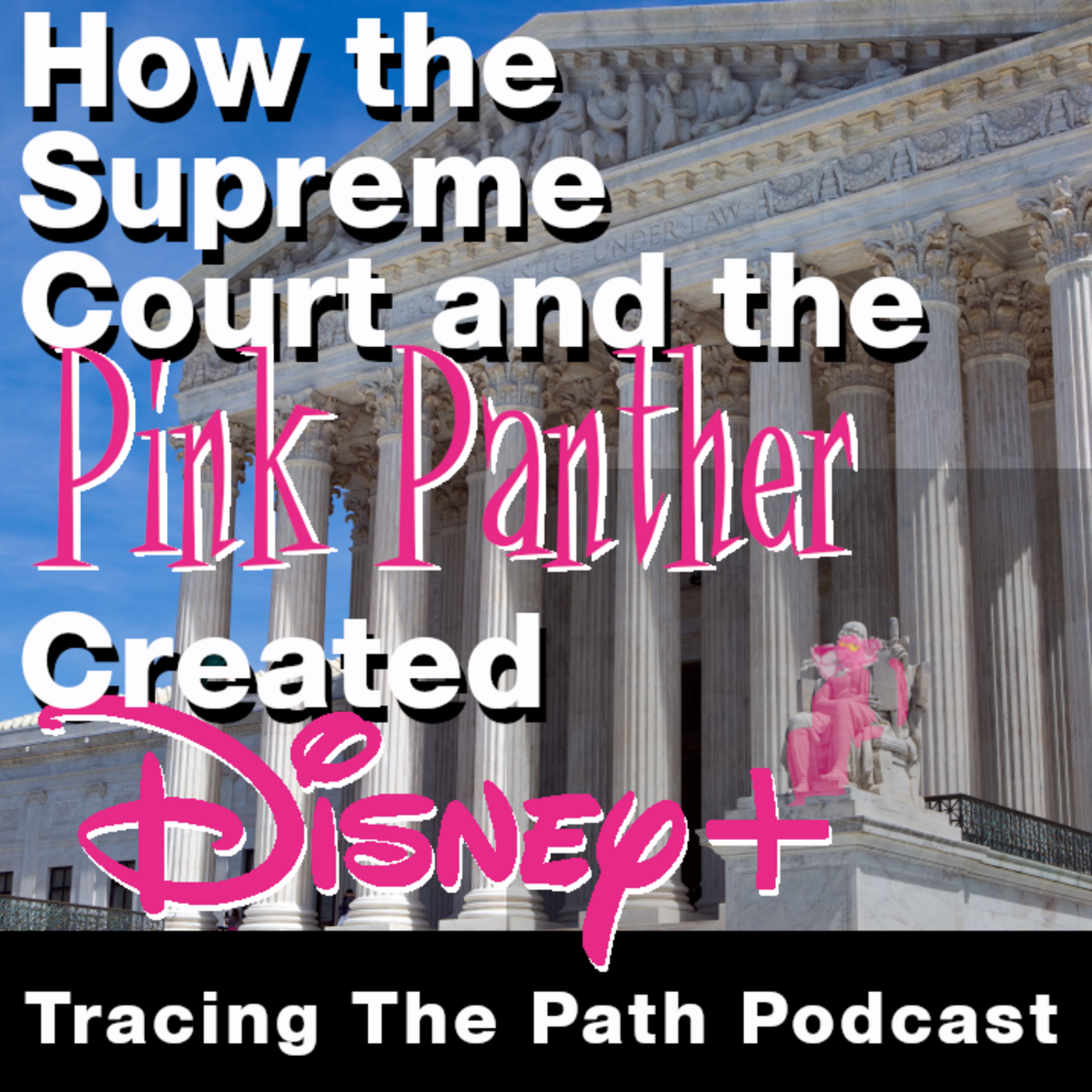
How the Supreme Court Created Disney+ and HBOMax
This source highlights the profound and far-reaching influence of H.G. Wells, particularly his science fiction works, on various pivotal moments and figures throughout the 20th century. It traces a remarkable chain of inspiration, revealing how Wells’s imaginative stories, like The War of the Worlds and The World Set Free, directly inspired individuals such as Leo Szilard in the development of nuclear physics, Robert Goddard in the advancement of rocketry and space travel, and Orson Welles in his iconic radio broadcast that revolutionized media.
Ultimately, the text demonstrates how Wells’s imaginative foresight contributed to key historical events, from the creation of the atomic bomb and space exploration to the cinematic revolution led by George Lucas’s Star Wars, illustrating the enduring power of speculative fiction to shape reality.

Audio Hour:
If you run an activity group, classroom or “audio book club”, click here for more information on using Tracing The Path.
Throughout the episodes, every tune is somehow related to the topic. In the Twinkies episode, for instance, the discussion of the Brooklyn Tip-Tops Baseball team concludes with “Take Me Out To the Ballgame”.
How many do you recognize? And harder, how many can you name?

How the Supreme Court Created Disney+ and HBOMax
This story is a tangled web, what started out as the history of the Pink Panther quickly became the history of animation, the story behind the Paramount Decrees, and the auspicious origin of Disney+.
It’s funny how all these 20th century stories began in the 1800s, and this one is no exception.
Jules Mastbaum was born in 1872 in Philadelphia. He attended public school and graduated with degree in finance from the University of Pennsylvania. And then he went to work at Gimbals department store.
Yes, the same Gimbals you see in Elf and Miracle on 34th Street.
There he climbed the corporate ladder, becoming their European representative, and earning the highest salary in the company. And with this money, the finance degree part of him wanted to invest it in real estate.
So he opened the first movie theater, or Nickelodeon, at an empty storefront in Philadelphia. And then, in 1911, he purchased the Regent Theater. He’d also acquired Vida Skopol and the Strand Theatre.
And by 1918, he had amassed a portfolio of 34 theaters, naming his company after his son, the Stanley Company of America. Then, in late 1918, he negotiated a massive $80,000 merger, adding 225 theaters to his chain, becoming the largest theater company in America.
Jules and his wife operated the company until Jules’s death in 1926, leaving the company to his wife. Everyone who knew Jules knew he could see a real future for the movie business. Sadly, his death came nine months before the Golden Age of Hollywood would begin.
In 1927, the Jazz Singer starring Al Jolson would take the movie scene by storm. Considered the first successful talking movie, The Jazz Singer would bring in 1.1 million to the mid-sized company Warner Bros. and signify the end of silent movies.
1928 would feature the sequel to The Jazz Singer and the first all talking movie “Lights of New York”. And thus kicked off the Golden Age of Hollywood.
Seeing other movie studios acquiring talking movie technology and being flush with cash from their big successes, Warner Brothers bought the Stanley Company from Jules’s wife, and then they had control of 300 theaters.
General Electric was responsible for the RCA photo phone, one of the important pieces of equipment needed in making talking movies. And while the big movie companies were signing agreements with them to use the technology, General Electric decided to get into the movie business themselves. First, they bought a film production company from Joseph Kennedy, and then the Keith Orpheum Theatre Chain. That would create the Radio Keith Orpheum Company, otherwise known as RKO or RKO Pictures.
The Dominoes didn’t end there.
20th Century Movies and Fox merged and then built the multi-million dollar Movietone City in California and then they bought the Galmont Theatre chain in the UK ,and Paramount bought the vast 1,200 unit Publix Theater chain and acquired half of the Columbia Broadcasting System with the intent of merging with Warner Bros.
By 1930 95% of all American movie production was in the hands of eight vertically integrated companies, RKO, Warner Bros., MGM, Paramount, 20th Century Fox, Universal, Columbia, and United Artists. By 1939 there were more than 15,000 movie theaters, there were more theaters than there were banks, and by 1945 over 7,500 movies had been made.
The number of Americans who watched at least one movie per week swelled to over 80 million. Part of that was because 15 cents was an affordable kind of entertainment during the Great Depression.

When MGM Owned The Theaters
Since the movie production companies owned theaters, they could pump out mediocre movies and still make great profit. Of the 7500 movies, only a few stand out, like the Wizard of Oz, It’s a Wonderful Life, Casablanca, Gone With the Wind and King Kong.
RKO was the smallest of the big houses. To get a foothold, they decided to take some big risks. For instance, after Orson Welles shook the world with his War of the World’s production, RKO thought Welles was the kind of visionary they needed, and signed a two-picture deal with him and his writing partner, Herman Mankiewicz.
Leaving him complete artistic control, they produced what some consider the greatest movie of all time, Citizen Kane.
And right after that, World War II began. That brings us to the first hero of our story, Walter Mirisch.
Born in 1921, Mirisch was the son of a Polish immigrant, growing up in New York City where he found a love of theater. Throughout high school and after, he worked as an usher at Jersey’s City State Theater.
A heart murmur kept him out of the Navy, so he moved to Bourbon, California to work at Lockheed Martin’s bomber plant. After that, he went back east and got a degree from Harvard.
After graduation, he got a job as a production head at Monogram Studios, a small movie production company that made low budget action films, including 15 John Wayne Westerns. Walter would work there until 1956, but it was during the World War II period that Monogram Studios excelled.
The U.S. Office of War Information controlled Hollywood during World War II, as it saw the entertainment industry, a good propaganda tool. They used the Bureau of Motion Pictures to relay the themes the government wanted to see and wanted to restrict. In addition to creating movies with patriotic themes, Hollywood directors also created documentaries for the Office of War Information.
Directors like Frank Capra, John Ford and John Houston, among others participated. Smaller companies, like Monogram with smaller distribution, flew under the radar a bit, and they could produce more movies.
The war years saw many of the entertainment industry celebrities get drafted or enlisted in the war. Actors like Jimmy Stewart, Clark Gable and Douglas Fairbanks, dancers like Gene Kelly and Caesar Romero, and musicians like John Coltrane and Henry Mancini all served in the war.
That gave young actors like Blake Edwards plenty of opportunities to be in the movies. Blake was able to be in 30 movies during the wars, alongside other greats like Maureen O’Hara and Spencer Tracy and Harry Morgan, Don Ameche and Otto Preminger.
During the war years, two-thirds of the US population went to the movies twice a week. That was just before the Hollywood Movie Studio system changed forever.
With the big eight movie studios owning the production, distribution, and exhibition, and the theaters, the Hollywood movie system made it difficult for independent filmmakers to get their movies shown.
Many filmmakers wanted to fight the system. Some contacted the Department of Justice complaining about a monopoly, but that was not going to be quick. So a group of prominent members of the entertainment industry decided to form an action group. They called it “the Society of Independent Motion Picture Producers”, and they chose a non-industry professional, Charlie Chaplin’s attorney as its president.
In early 1941, eight producers signed the articles to start the group. Charlie Chaplin, Walt Disney, Samuel Goldwyn, Alexander Korda, Mary Pickford, David O. Selznick, Walter Wanger,and Orson Welles.
The announcement of the society would spur in the Department of Justice to begin an investigation. It wouldn’t be until 1948 that the government’s case would end. The big eight studios were charged with violating the Sherman Anti-Trust Act. The decision became known as the Paramount Decrees, and it forced the studios to sell off the theater chains and cease selling blocks of movies.
The Department of Justice gave no expiration date.
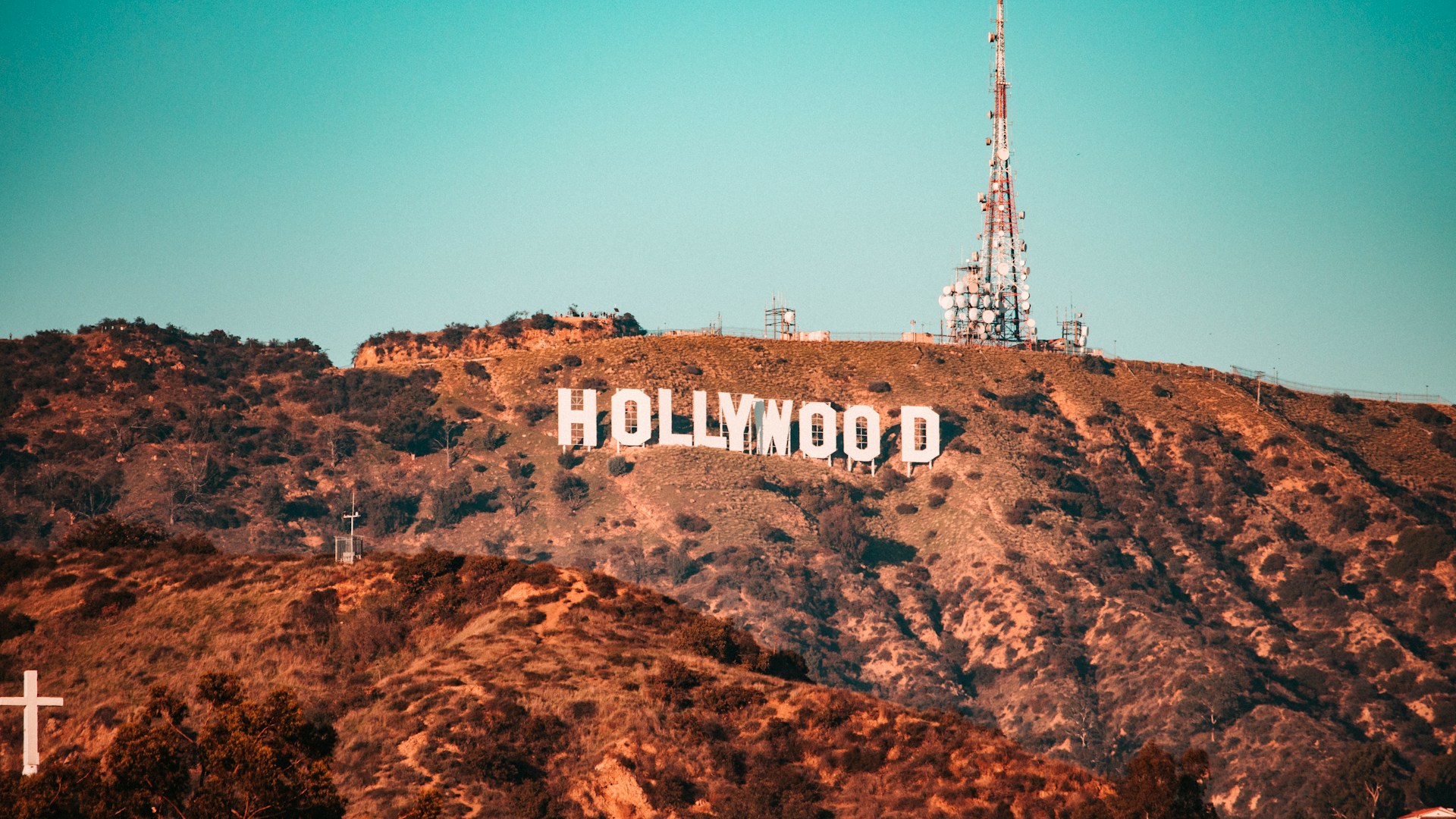
The Break Up of Hollywood
The breaking up of the Hollywood movie studio system would open up pathways for independent filmmakers to get movies into theaters. But it was the proliferation of TV that would make the biggest dent in Hollywood’s dominance.
Seven years at Monogram Studios was enough to show Walter Mirisch that independent films could be made outside of the Hollywood studio system. So Walter and his two brothers started their own company.
The power and creativity filmmakers brought to the table, was hampered by the big movie studios. They wanted the studio that gave complete freedom to their filmmakers. While he wished the Paramount Decrees made it easy for the independence, it didn’t. It just opened doors, so he still needed to negotiate a deal with one of the big eight for distribution.
As such, he secured a 12-picture deal with United Artists.
And that brings us to the second hero of our story. Friz Freleng was born in Kansas City in 1905, with a love of animation from an early age. In high school, he drew cartoons for his school newspaper and for a national contest. He also worked part-time at the Casey Film Service, alongside a young, b Iwerks and a young Walt Disney.
He’d work alongside Ub Iwerks and Disney for two years, helping with their laugh-o-grams and doing work for newspapers and magazines. But in 1922 Walt Disney would leave and start a new company with Iwerks. There, they would focus on Alice in Wonderland.
In 1924 with their Alice in Wonderland project unfinished, Disney would move to California and start the Walt Disney Company with his brother Roy. He’d ask all his Kansas City friends to come out and help. Friz, however, wouldn’t make the leap until 1927, as Walt Disney promised to train him, if he came.
Right away after he arrived, Friz Freleng got to work on Oswald the Lucky Rabbit and the Alice in Wonderland Project, now named The Alice Comedies. But the relationship wouldn’t last, as Friz and Disney had many personality clashes. So much so, Walt Disney fired Friz in 1930, and he vowed to never work for Disney again.
Together with Friz’s friends Harman and Ising from Kansas City, Friz created a new company and produced a new cartoon called Bosco. Their Bosco cartoon would be noticed by a Hollywood veteran, Leon Schlesinger.
Leon had made a name for himself in the silent movie industry, making title cards for silent films. But 1927’s The Jazz Singer ended silent films, forcing Leon to pivot. That’s when he started his own company and added Tex Avery, Chuck Jones, Carl Stalling and Mel Blank to the team. Together they created Porky Pig, Daffy Duck, Bugs Bunny, Sylvester the Cat, Yosemite Sam, Tweedy, and Speedy Gonzalez among others.
For a boy who started out working as an usher at the Palace Theatre in Buffalo, New York, Schlesinger created quite a business.
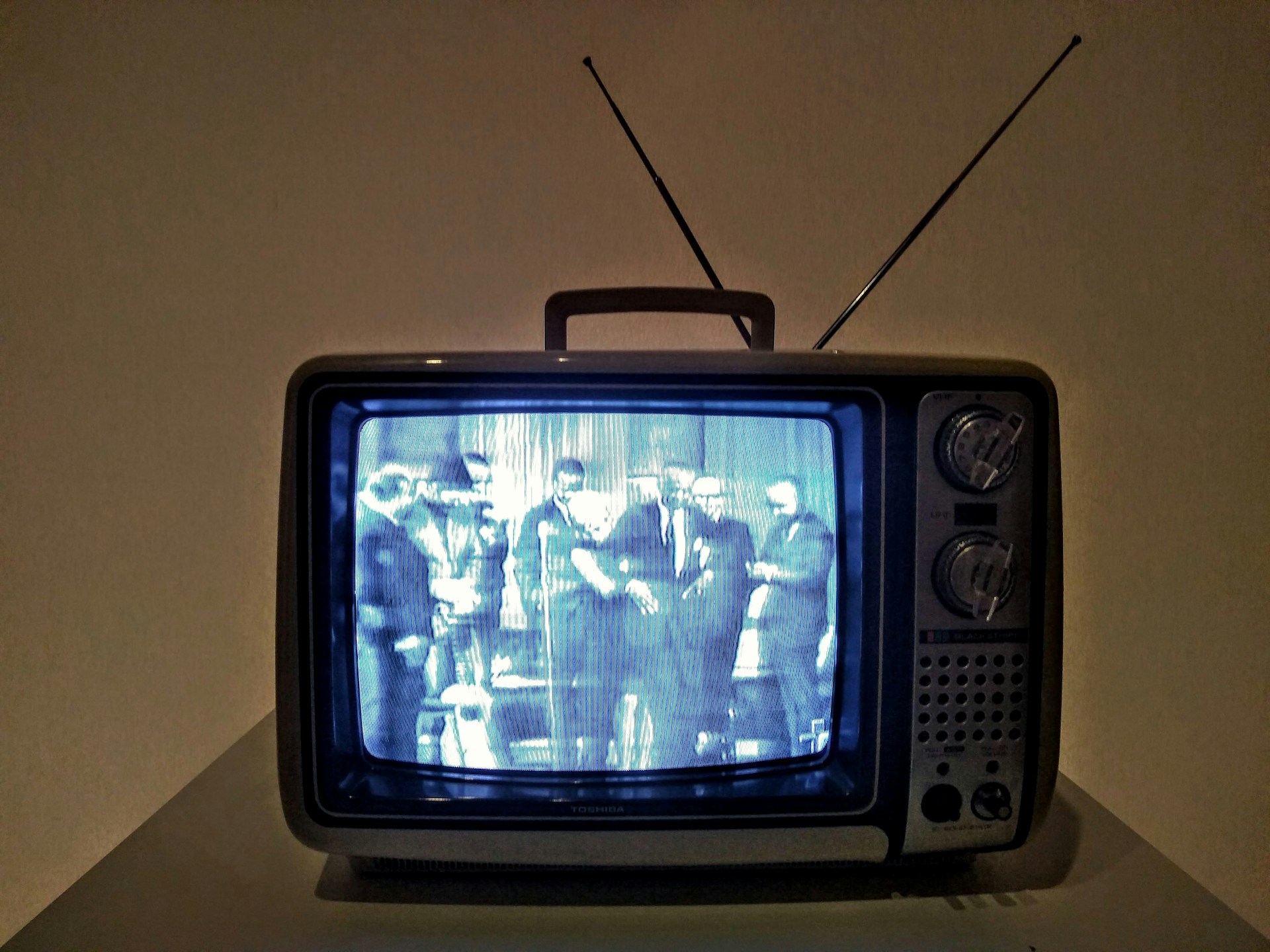
TV Breaks The Movies
World War II was a defining moment for America, however. Beyond the end of the Hollywood studio system and Hollywood’s Golden Age, Americans longed for something new. And the coveted television would fit that mold.
By 1949, almost all major cities had at least one station, and while only 44,000 homes had a TV in 1946 by 1949, 4.2 million homes had a TV, and by 1953, 51% of the country had TV, and then there were 60 million by 1960. The dawn of the TV age had begun.
By 1964, Warner Brothers closed their cartoon division, as few people were flocking to the theaters to see them. Instead, they were staying home to watch them on TV.
That led Friz to taking a job at Hanna-Barbera.
Simultaneously, he and his boss at Warner Brothers, David DePatie, started a new company, DePatie Freeling Enterprises. That brings us to the third hero of our story, Henry Mancini.
Henry was born in the little Italy section of Cleveland to Italian immigrants. At age eight, he started learning to play the piccolo and was inspired by Cecil B. Demille’s film The Crusaders. He wanted to pursue film music composition as a career.
He studied under the Pittsburgh Stanley Theatre conductor, Max Edkins, and produced arrangements for Stanley Theatre, including one for Stanley Theatre’s up and coming band leader, Benny Goodman.
And yes, the same Stanley Theatre chain, started by Jules Mastbomb, discussed at the beginning of the story. He later trained at Juilliard, but when he turned 18, he had to enlist in the US Army and went to war.
During basic training, he met Glenn Miller and ended up being assigned to the 28th Air Force Band. After the war, Henry joined the Glenn Miller Orchestra, and then signed on as a studio musician with universal pictures. Mancini would work on music for over 100 movies, including Creature from the Black Lagoon, It Came From Outer Space, and the Glenn Miller story for which he’d receive an Oscar nomination.
He’d stay at Universal until 1958, when the actor turned director Blake Edwards, hired him to score a new TV show called Peter Gunn. This would be the first of 30 films Blake and Mancini would do together.

Mr. Blake Edwards
Blake Edwards started his career in the early 40s, writing radio scripts in screenplays, and then finding work as an actor during World War II. Prior to Peter Gunn, Blake Edwards had created Mickey Rooney’s first TV show.
In a 1959, he directed his biggest budget movie Operation Petty Coat, with Cary Grant, which became a United Artists movie. And then he made the movie Breakfast at Tiffany’s, considered to be the first cult classic film. Finally, Days of Wine and Roses, would cement Blake Edwards as an important director.
That brings us back to Walter Mirisch and the Mirischh Brothers with their 12-picture deal they negotiated through Universal. The Mirisch brothers just needed to make long-term relationships with brilliant filmmakers. They’d start with Billy Wilder, Norman Jewison, and Blake Edwards.
Blake Edwards was a particularly good joint venture, but this is the part of the story where our heroes come together, Blake Edwards, Henry Mancini, Walter Mirisch, and Friz Freleng. With Blake Edwards, the Mirisch Brothers’ goals of giving complete freedom to filmmakers would be tested right away.
They didn’t like his first idea, a jewel heist comedy, but knew they needed to give him freedom. To make this dream a reality, Blake teamed up with his co-writer from Operation Petty Coat and his music partner, Henry Mancini, from Peter Gunn.
The idea was a comedy jewel heist, where the police inspector was tasked with finding a large pink jewel, characterized by an internal flaw that upon close inspection looked a lot like a pink panther.
He asked his friend Henry Mancini to come up with a jazzy score, and he wanted the opening title sequence to be an animated pink panther who reacted to the opening credits. For that, he turned to the best animation team in the business, Friz Freeling and David DePatie.
Friz was delighted to get the call. Since Warner Bros. shut down cartoons, they’d spent their time working on commercials, for the likes of Charlie Tuna, Post Cereal, the Exxon Tiger and Gillette. The idea of a new animated short was intoxicating.
They quickly presented Blake with over a hundred Panther designs, and almost immediately, Blake Edwards saw the one he wanted. A slender pink panther with a cigarette holder in his hand. With the idea of timing the sequence to the Henry Mancini music, Friz waited for it to be done, and then his team went to work.
Blake Edwards told Henry he thought the score should be jazzy and Mancini agreed, but he pictured in his mind a cat burglar, tiptoeing through a dark room, and wanted to produce something single-patic, mysterious and smooth. And he wanted this friend Plas Johnson to play the sax, because that is exactly what he was.
And the finished product was nothing less than genius. The opening animated title scene of the movie Pink Panther created such a positive reaction. Projectionists had to stop the movie to let the audience stop laughing before continuing.
Friz and David had had enough foresight to ask Walter Mirisch and Blake Edwards for part of the copyright of the Panther, and they got it. With such a positive reaction to the title sequence, they decided to create an independent movie short based on the Pink Panther alone.
In 1964, that movie, the Pink Fink, was released, and won the Oscar for Best Animated Short.
Blake Edwards would go on to make more Pink Panther movies. Eventually, there would be six. And DePatie Freeling would create a syndicated cartoon series, comics and merchandise all around the Pink Panther.
In 1981, the DePatie Freeling could see the writing on the wall. The big companies with new technology gained a huge animation advantage, and so they sold their films to Marvel Comics. And then Marvel was bought by Disney.
So, Friz Freeling, the animator, who had a falling out with Walt Disney when he was very young, and swore he’d never worked with Walt again, ended up with his life work in Disney’s hands.
And even more amazing, in 1927, The Jazz Singer effectively ended silent films, and in so doing, opened the door to an award-winning animated Pink Panther, who was totally silent.
Finally in 2019, the Department of Justice decided to terminate the 1948 Supreme Court Paramount decrees, making it legal for the big eight companies to own the production, distribution, and exhibition of movies again.
The biggest movie companies wasted no time attempting to regain the foothold they had in 1947. Twenty-century Fox, Paramount, and Warner Bros., all created paid apps where only their movies could be seen. And now, 103.6 million people subscribe to Disney+, which owns 20th Century Fox.
36 million people subscribe to Paramount+.
And Warner Bros. has already grown their HBO Max subscription to 44.2 million subscribers and is bypassing theaters altogether.
How soon will it be when it’s hard to find a place to watch independent movies like the Pink Panther?
You’ve been listening to Tracing the Path with Dan R Morris
CUTTING ROOM FLOOR
To hear all the stories that hit the cutting room floor, you have to listen to the episode.
ABOUT THE SHOW
Let us tell you the story of the 20th Century, by tracing each event back to the original decisions that shaped it. You’ll quickly find out that everybody and everything is connected. If you thought you understood the 20th Century, you’re in for a treat.
Tracing the Path is inspired by storytellers like Paul Harvey, Charles Kuralt, and Andy Rooney.
INTERCONNECTED EPISODES
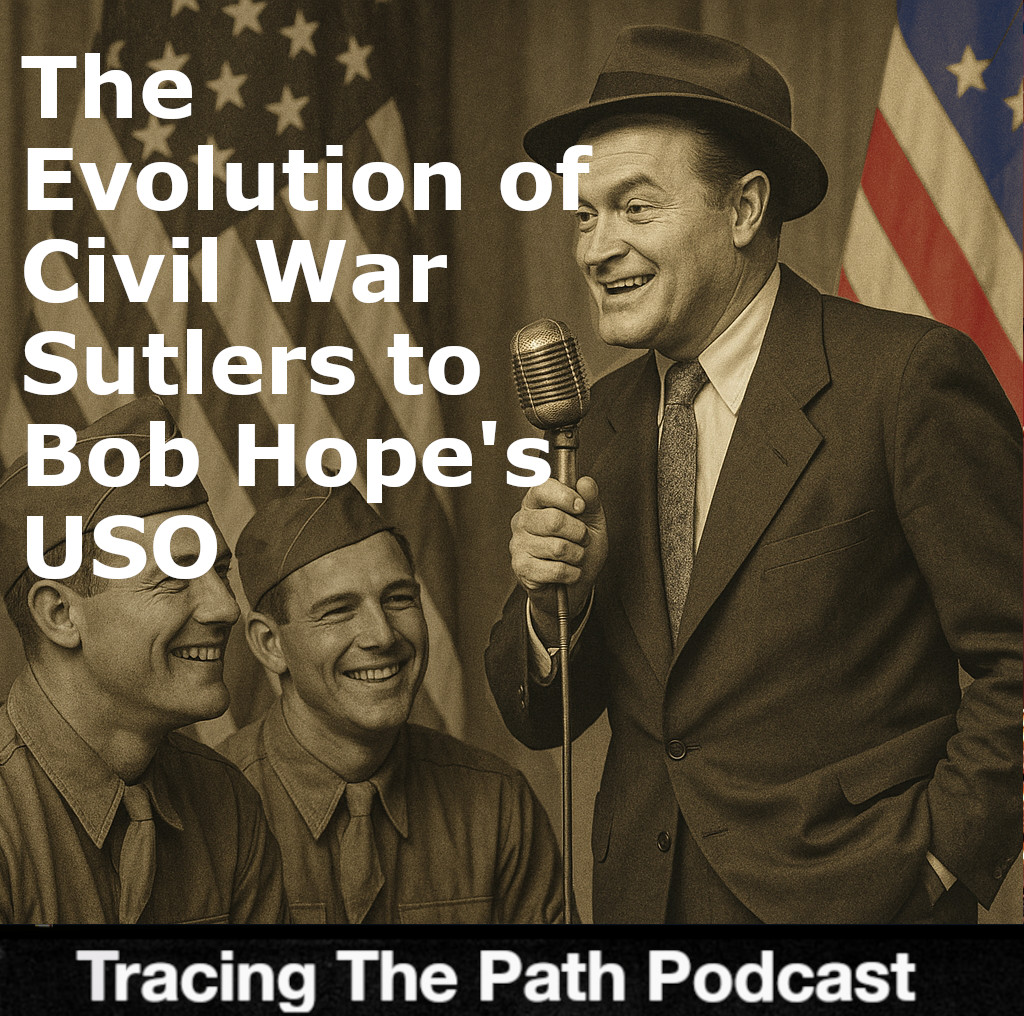 |
Evolving Civil War Sutlers into the Bob Hope’s USO Many factors went into the success of the USO. It wasn’t necessarily just big hearted celebrities |
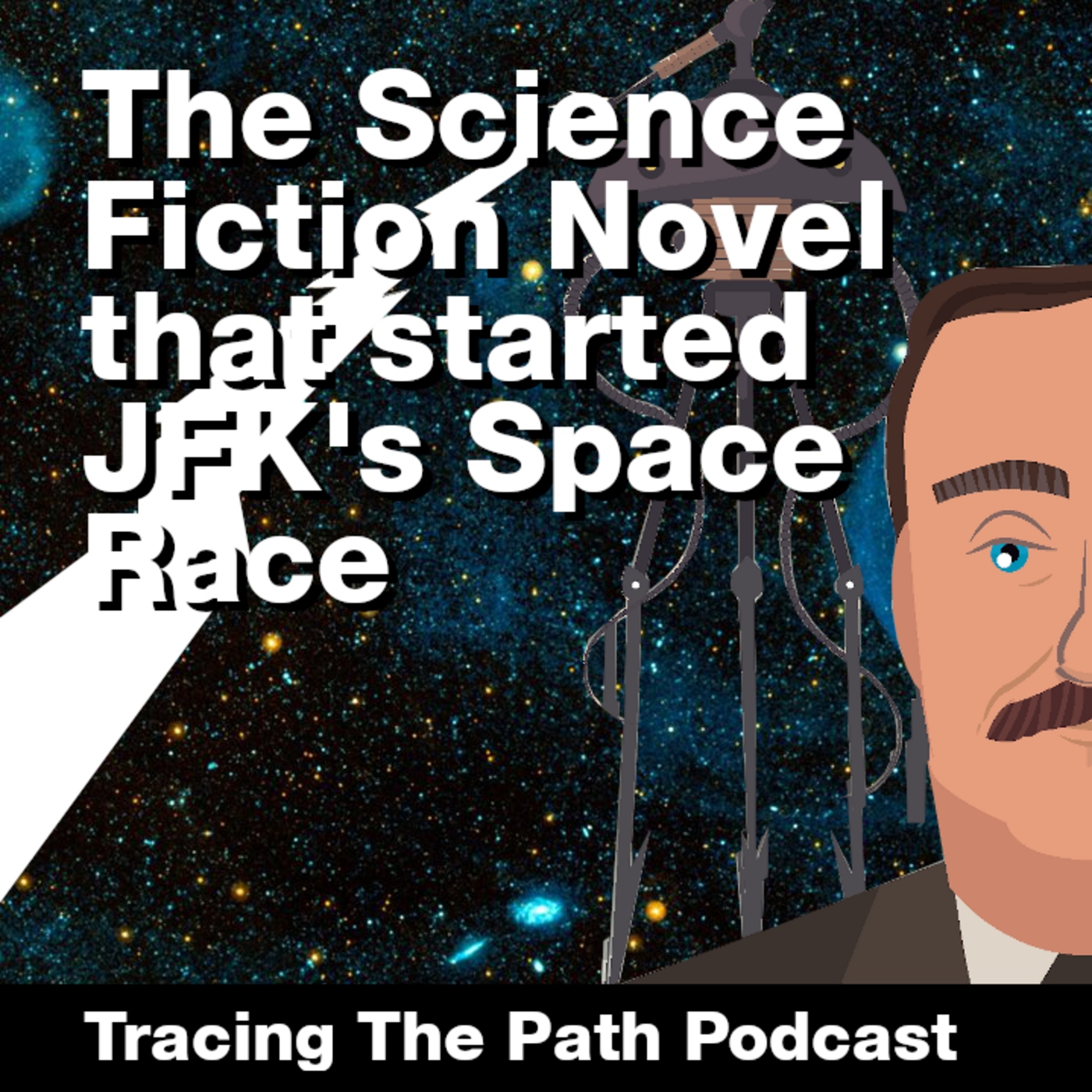 |
Who Started the Outer Space Race? Elon Musk isn’t the first person to have his eyes set on Mars. |
 |
She Bombed the President for Votes Women, who were given freedom by the Constitution spent 200 years fighting to use it. |
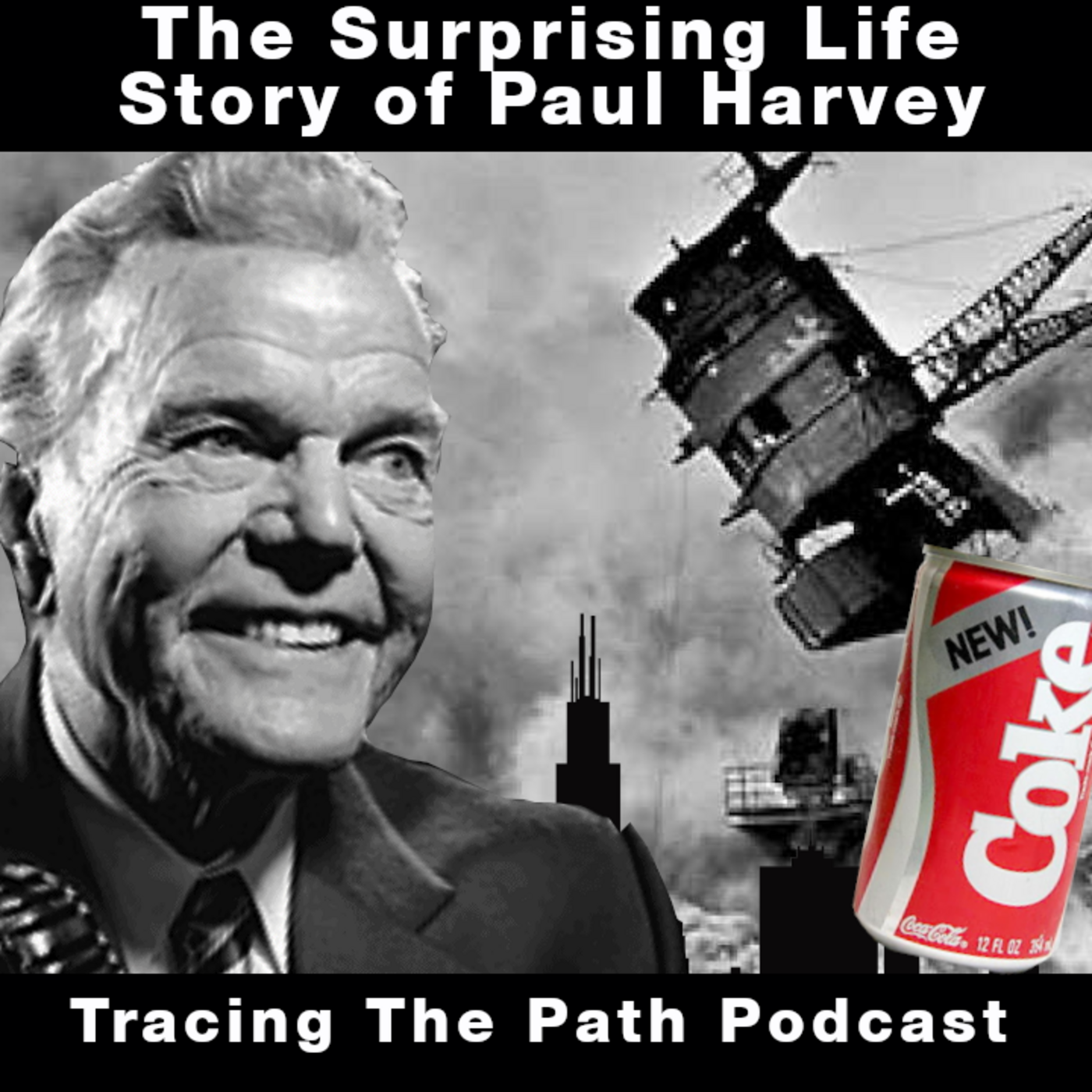 |
The Surprising Life Story of Paul Harvey Pearl Harbor, Pilot, Chicago and Coca-Cola; The World’s Most Prolific Radio Man |
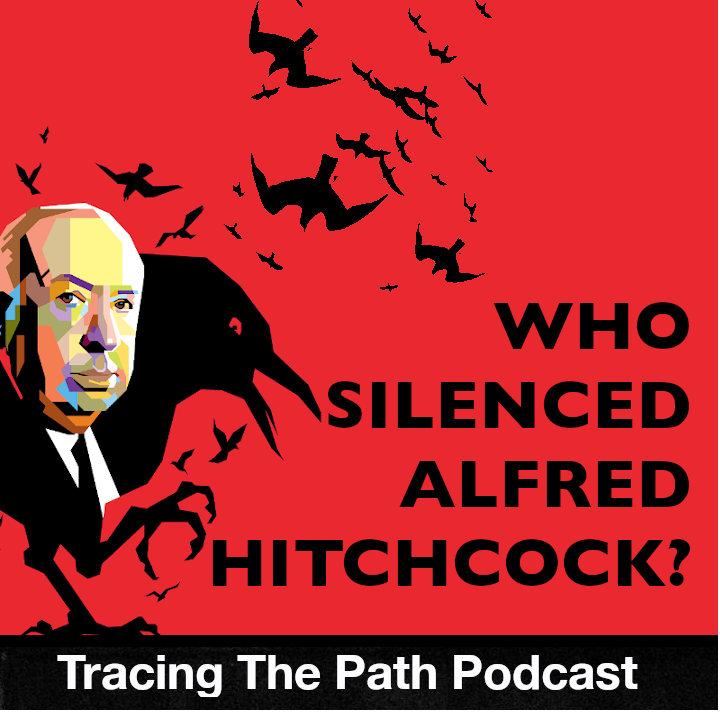 |
Who silenced Alfred Hitchcock? There can be two distinct meanings to the word Silenced. |
 |
The America of Tarzan and Buck vs Bell When Tarzan and the Supreme Court defined the popular culture |
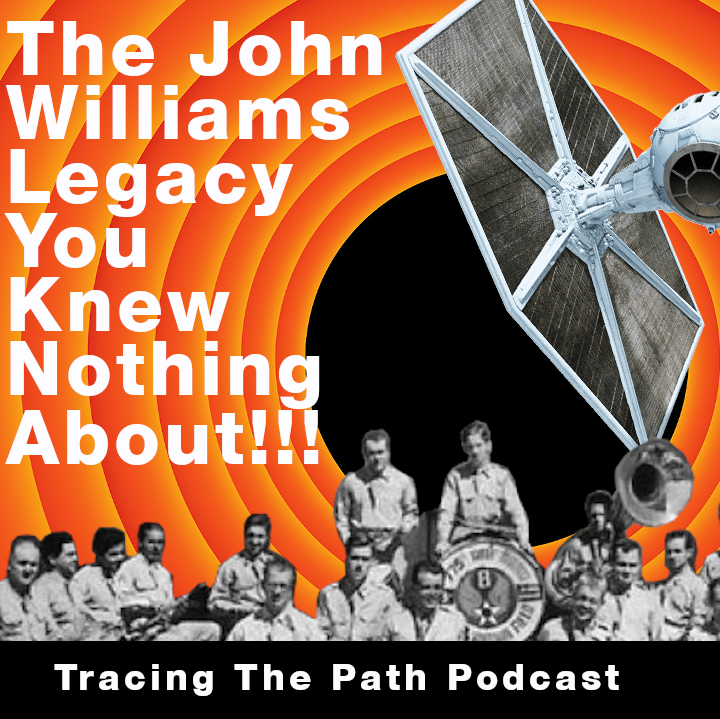 |
The John Williams Legacy You Knew Nothing About John Williams of Star Wars? of Looney Tunes? of the Boston Pops? of Toto? |
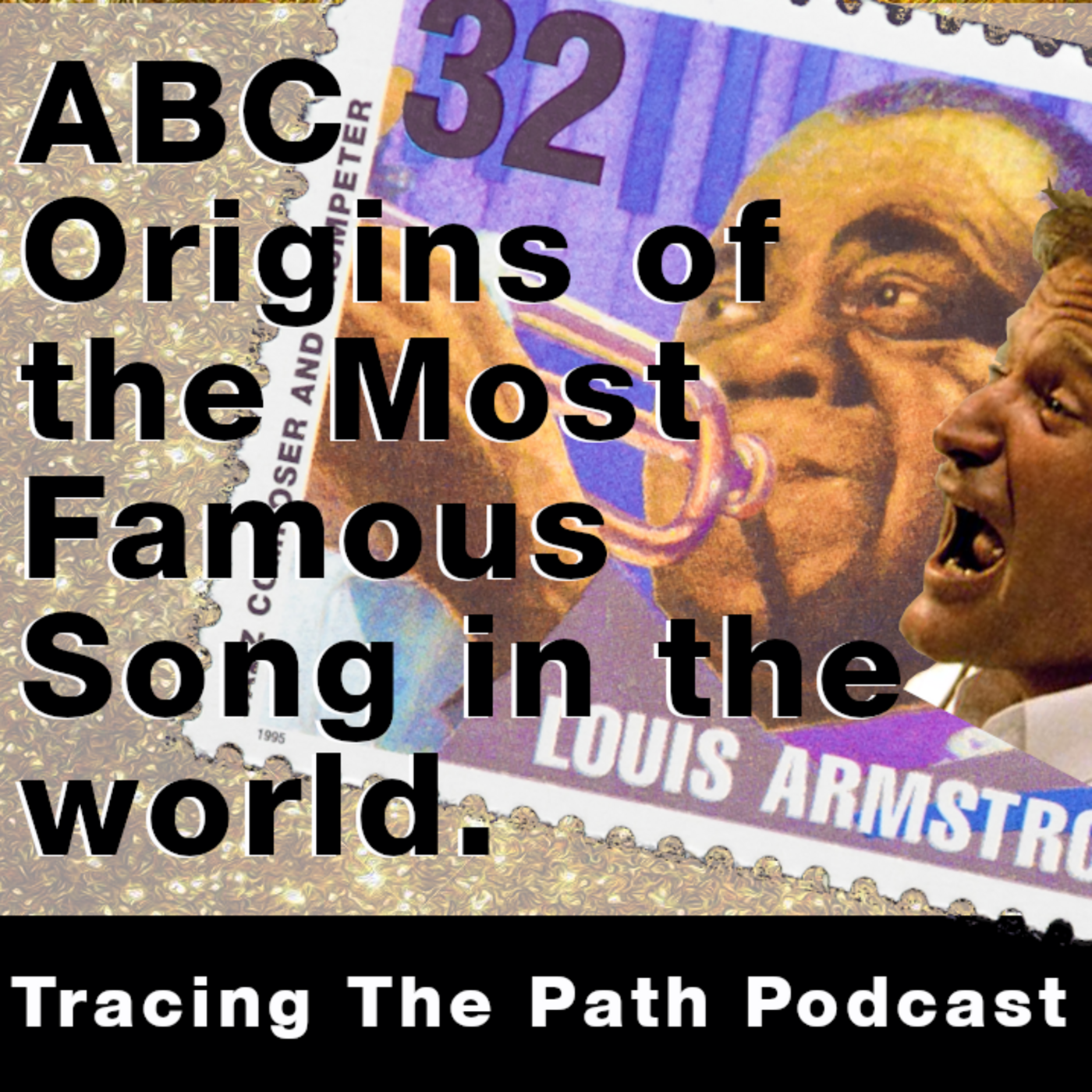 |
ABC Origins of the Most Famous Song in the World Can you believe a children’s folk song became a Grammy Winning Song |
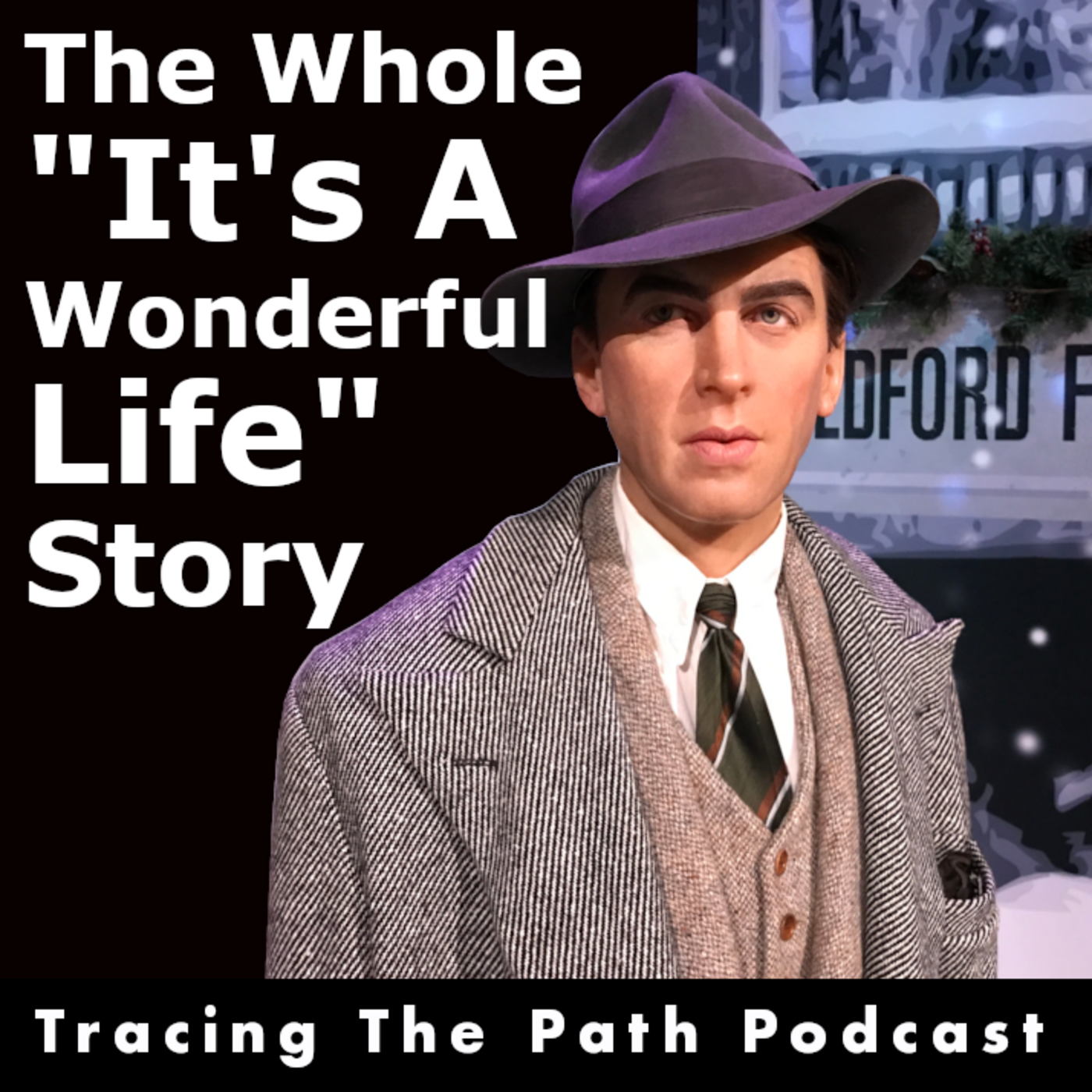 |
The Whole It’s a Wonderful Life Story There’s a lot more to this famous movie that Public Domain |
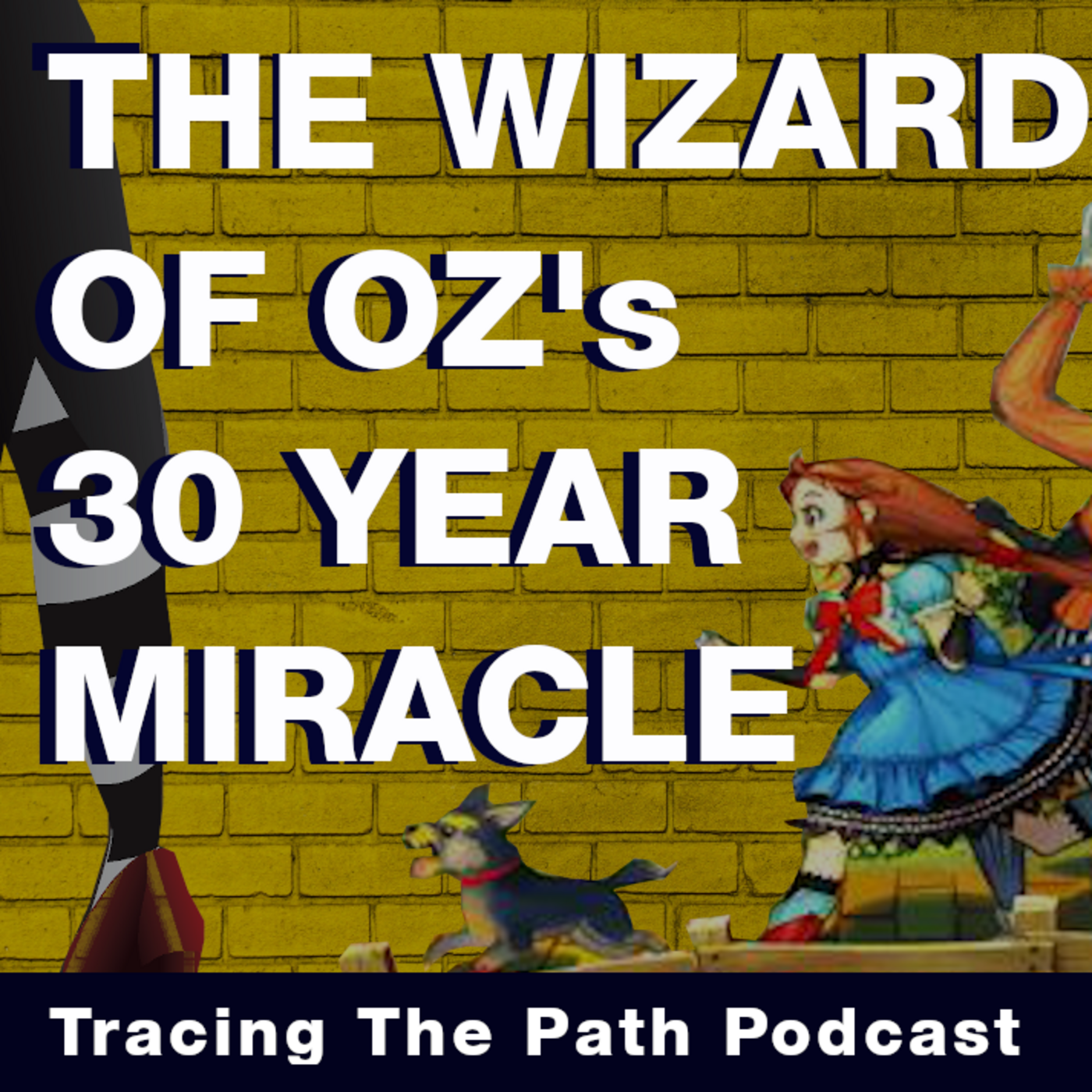 |
The Wizard of Oz’s 30 Year Miracle Beyond every American watching the Wizard Of Oz, this story has ties to Frank Lloyd Wright. |
SEE THE BIBLIOGRAPHY
SUBSCRIBE AND LISTEN (FOR FREE!)
RATINGS & REVIEWS
If you enjoy this podcast, please give it a rating and review.Positive ratings and reviews help bring Tracing The Path to the attention of other history lovers who may not be aware of our show.



